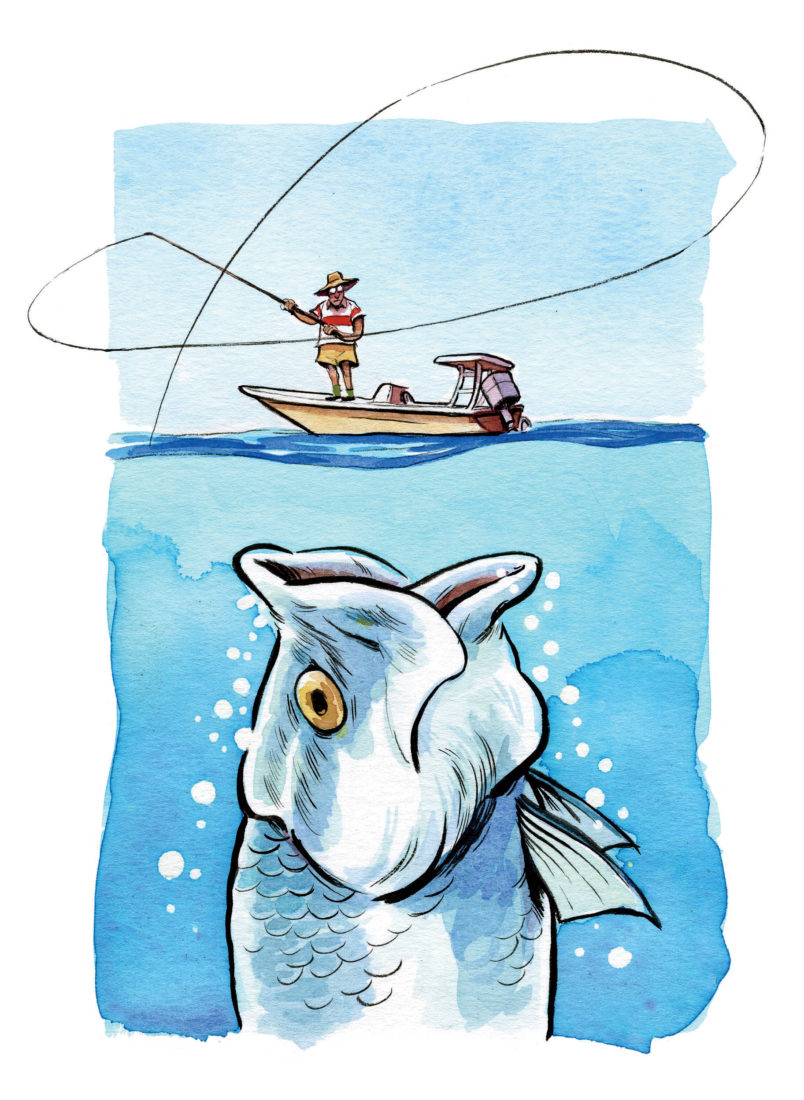Q. Headed to Islamorada for tarpon season. Any catch-and-release tips?
Catch-and-release is the way to preserve any angling sport, and South Florida’s guides are among the nation’s leaders in doing just that. But know that wrangling a tarpon requires a complex series of tasks that begins with choosing your rod weight and ends with resuscitating a fish at the side of the boat after a long fight—even as the monster may still be contesting you for the privilege of keeping it alive. You can’t reason on a Marquess of Queensberry level with a hooked tarpon; there’s no way to say, Hey, nice go, now let me help you. Instead, handling the fish becomes a form of hunting Zen: the craft of knowing how not to break a prehistoric animal’s spirit, and the art of reviving that same wild being who abhors your very touch. Your guide will know more, but two pointers: Study up beforehand on a tarpon’s great, heartbreaking leaps when hooked, and the corresponding rod play. The females are the larger of the Megalops atlanticus, so if you in ignorance break Big Mama, you’re also wiping out her spawn (she drops up to twenty million eggs per season). Second, do not boat the fish to take a picture. It causes incredible stress. Your angling vanity shouldn’t make that silly shot this grand tarpon’s last gift to the biosphere.
Q. Easter quandary: My wife’s family does lamb, but mine loves ham. Both sets of in-laws are descending upon us.
We hear your hurt. That said, doing both entrees is the
coward’s way out. The roots of all meat in our celebratory cookery lie in Greek and pagan customs, in the Judeo-Christian lexicon (Passover lamb), and not least in the checkered history of refrigeration. I suggest thwarting the expectations of each family by ditching the lamb roast and the baked ham—to me, dead boring responses to the day—for a third, honorably Southern, and more entertaining option. Ring up your local bespoke hog man and reserve a finely cured country ham. On the South’s traditional unrefrigerated-meat calendar, hogs were typically killed in late autumn, cured over the winter, and served in the spring. It’s a ham, but elevated by its agrarian roots—get it? Of course, if in the holiday run-up you get what we’ll diplomatically call “the look” from your spouse, toss out all this culinary judo and force your side to eat the lamb you’ll be roasting.
Q. We’re going to the Kentucky Derby with horse lovers, but know nothing about handicapping. Suggestions?
The Derby is a national exercise in discovery. The horses
have only been racing a few months, so 2017’s three-year-old Thoroughbreds are just now growing into their talent. Trainers, jockeys, and owners can do their best, but nobody really knows whether these finicky green athletes can even manage the tactical grind of a big-league stakes race without completely freaking out. Still, there are road markers as to what a colt may do at a hot clip down the stretch. Since the 2013 season, a point system has been used to qualify Derby entries, so you’ll want to follow the top finishers in any of the seven 100-point races in the weeks before May 6 in Louisville—the Arkansas and Louisiana derbies, New York’s Wood Memorial, and California’s Santa Anita Derby, among others. Factor in the field’s notable sires, particularly those known for distance. Trainers and jockeys can make a big difference as well; know who’s who. And should you get skunked, that’s called a horse race. Should you win, buy your boon hosts a bottle or three of champagne. They’ll invite you back.








